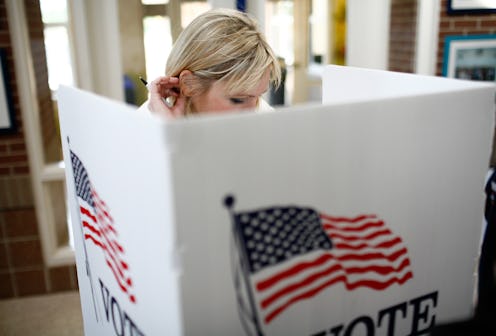News
How A Recanvass Could Help Bernie Sanders
The Bernie Sanders campaign has officially requested a recanvass of the votes from Kentucky's Democratic primary, held earlier this month. What exactly is a recanvass? Let's delve in and take a look at Kentucky law.
A recanvass isn't the same thing as a recount, but it can happen at the same time, or independently of one. Both a recount and a recanvass involve double checking votes, but there is one crucial difference between these two procedures: where exactly they'd be taking place.
That might sound like a trivial matter, but it isn't simply like having to decide whether or not the school gym or the school library is a better venue to execute the procedure. In a recanvass, the local election authorities, on a county-by-county basis, will be going through paper ballots, as well as electronic voting machines, to determine whether or not there is a difference in the number of votes for each candidate. The recanvass would also confirm the number reported on the initial canvass of votes submitted to the Secretary of State, Alison Lundergan Grimes.
On the other hand, a recount has to be conducted through the court system, and all of the ballots, election machines, and election materials would have to have been turned in to the Circuit Court; that's a much bigger deal and one that the Sanders campaign — or any campaign who would have called for a recount — would have had to bear for themselves.
In short, a recanvass isn't as big of a deal as a recount, but it still could have an implication on the size of the Kentucky delegation to the DNC for the candidates. Something like a transcription error — a perfectly innocent mistake made by a volunteer at the end of a long, noisy day — could result in Sanders picking up an extra delegate or two. Take a look at Breckinridge County, for example. Hillary Clinton won the county by just two votes. I'm not saying that there was any malfeasance here, but any number of potential typos could have occurred. A recanvass is a quick way to make sure that every vote was counted properly, without the hassle of a full recount.
Or take Henderson County, an island of blue among a sea of green. If an 8 had been recorded instead of a 9 (a pretty common error to make, honestly, due to their location on the keyboard and the fact that they are graphically similar), a recanvass would uncover that, and allow for that error to be corrected; no harm, no foul.
In fact, according to the results from The New York Times, in 17 out of Kentucky's 120 counties, the margin between Clinton and Sanders was less than that of the combined votes for former candidate Martin O'Malley and San Diego businessman Roque De La Fuente, who is still in the running. When the margins are this close, a recanvass is definitely a cost-effective way for the Sanders campaign to have the potential to gain delegates.
In Kentucky, there are two main sections of the law that deal with recanvassing procedures. Section 31 KAR 4:070 lays out what happens when a recanvass is called, including how different kinds of voting machines are recanvased. KRS 117.305 goes into more detail about voting machines, as well as who can be in the room at the time. It's basically like the recent Nevada recount plotline in Veep come to life. It's pretty interesting to read through, but it'll be hard to divine anything further in the statues about who is more likely to come out ahead.
In a chess match that won't be decided until after the delegates are seated in Philadelphia, this move by the Sanders campaign may pay off on the delegate front. A race that was this close deserves a second look, just in case.
